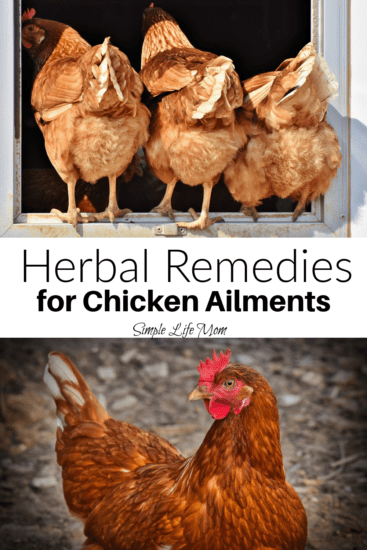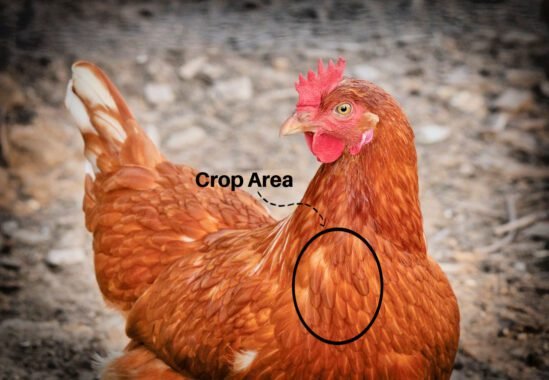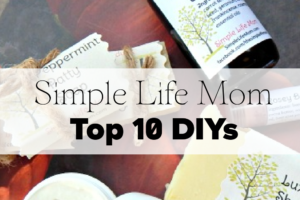We had three blessed years with chickens before having any problems. During those three years we had to butcher mean roosters, but we didn’t have any ailments. No sicknesses, no sores, no parasites. No need to study and use herbal remedies for chickens.
It was great!
If you’re wanting to get started with backyard chickens and don’t know where to start, click here and learn more. If you are looking for breed differences and what would be the best breed for you, then click here.

Then it was like everything hit at once. I think we suffered from every chicken issue that you could think of within a span of 3 months! It even crossed my mind to get rid of all of my chickens. Yes, it was that bad!
I could make this article into one for each chicken ailment. They all have that much information I could share on them. But this isn’t really a chicken website, but an all around home and body website, so I wanted to provide you the basic information that I wish I had all in one place when I first started having problems with my chickens. I hope you find it helpful.
Vent Gleet (a.k.a. poopy butt)
The first thing that happened was that a number of my chickens developed a poopy butt. This is called vent gleet. It’s usually a bacterial/yeast infection that comes from the gut and then can infect the lower intestines.
Signs:
Crusty dried poop around the vent and feathers dripping down from the vent. Instead of their normal poop, infected chickens will have white, sticky, stinky poop. Swelling around the vent will often occur along with the obvious sign of the dried poop on its backside.
Problem:
The biggest problem that can occur is Fly Strike. This is the most grotesque chicken issue you’ll ever have. This is when a fly is attracted to the poop and lays eggs on the chicken. Those hatch and then maggots burrow into the chicken’s flesh (more on that below).
Obviously, fly strike can cause death, but also having a yeast infection and bacterial infection can lead to overall poor health and make the chicken more susceptible to a number of ailments, including parasites, sour crop, and death.
Solution/Prevention:
First:
They need to get clean. That poop has hardened like cement and they need a good soak to get clean. This means a nice Epsom salt bath. What I did is buy plastic containers with lids. My containers are not quite tall enough so that when I put the lid on I can feel that the chicken has to squat slightly. That’s ok, but not exactly what I wanted. I cut a whole in the lid using a utility knife so that they can stand with their head sticking out while their body soaks and I don’t have to hold them down or get soaked. I do have to use a brick on the lid on some of my feisty chickens, but most just enjoy their bath.
What you Need:
- One plastic container and lid with a hole cut in it.
- Luke-warm water (depending on the time of year)
- 1 cup of Epsom salt
Soak for 20 minutes and then use a gloved hand or cloth to make sure all poop has been released and their feathers are clean. IMPORTANT: make sure you dry them well before letting them go. If you ahve a zillion chickens then just soak them in the morning and towel them off and let the sun dry them, but if you have the time go ahead and give them a little blow dry on the cool setting to get them close to being dry. A wet environment encourages fly strike (see below).
Second:
You need to clean everything! Take all their water containers, food containers, etc. and scrub them with soap and water. Throw away anything moldy.
After everything is clean, add 1 tablespoon of apple cider vinegar to their water (per gallon) and continue cleaning their containers regularly. If you have ducks this is, unfortunately, daily or every other day. The combination of cleaner containers and a slightly acidic water source will help kill yeast and help them heal. Make sure their coop is clean as well. Take the time to add an extra layer of hay if you layer mulch, or clean out that poop if you use sand. Spray down for bugs if you have mites or anything like that (see below). Clean, clean, clean.
Third:
If you feel like the bath and apple cider vinegar still isn’t working, then add garlic to their diet. You can do this in a few different ways. The easiest is to add 3-4 crushed cloves to their water (1 gallon). Another way is to crush the garlic and dice it and sprinkle it over their food. Adding it to their food means that some may avoid it and some may gobble it all up leaving none for others, but you can test to see who likes it and try to ensure your problemed child gets some regularly.
Prolapsed Vent
This was the second problem we had with one of our chickens. One of our very old hens was hiding under our steps. When I got closer, I saw that her backside was very bloody. At first, I thought an animals had attacked her. On closer inspection I saw that the damage seemed to be on extra flesh outside of her body. I didn’t realize at first that it was a prolapse, because she had been pecking at it and had ripped it to pieces. I cleaned her off and eventually figured out that it was a prolapse. I did a lot of reading and decided I would go ahead and try and push it back in, so I grabbed those disposable gloves and pushed it back in. Within 20 minutes she had a seizure and died.
So, I’m not giving an herbal remedy for this one. I’m just letting you know that sometimes very old chickens have prolapse and it’s usually when they are at the end of their life. When younger chickens have it it’s usually because of having problems laying an egg. If you can gently clean the area and push it back in it may stay, but if it’s been out for a while and is damaged the outlook isn’t good. I have heard of chicken surviving this though.
Mites on the Chicken and in the Coop
Mites in the chicken coop lead to mites on your chickens! These tiny bugs will be creepy crawling up from the poop on the ground and are often in the bedding and around wooden walls that are damp or dirty.
Problem:
Even though I treat internal parasites below, mites are technically a parasite as well. They are like fleas on a dog, living off of the chicken’s blood. If left untreated, the chicken will become anemic and sickly and possibly die.
Signs:
The mites come out of the cracks in your coop at night and eat on them while they try to sleep. Look on them at the base of their feathers. You’ll see little bugs.
You may also see scabs on their feet and legs from the bites and they may not want to sit in their coop. Their feet will look scabby, peeling, and whitish.
There are a ton of reasons for decreased egg production, but a really bad mite infestation may also be a reason.
A common test is to go into the coop at night and run a piece of paper under the roost. If it has a red smear then you know you have mites.
Solution/Prevention:
If you have mites, you can’t just spray and hope to kill them all. You have to take a number of steps. It’s worth it in the long run! Instead of dealing with the problem half way for a year, you’ll deal with it completely the first time.
First:
Remove the chickens from the coop.
Clean out every bit of the bedding. You have to start fresh. Don’t just put the bedding in their run. Completely get rid of it. Burn it if needed.
Second:
Clean the coop. I make an essential oil spray that kills all mites and flies on contact. In a 16 ounce spray bottle, add 20 drops each of:
Wipe everything down. My coop is a very old shed with a dirt floor and huge wooden beams. It’s not easy to clean, but when I clean, I wipe down everything that I can. Once everything is wiped down, use the essential oil spray to spray everything down. This will help kill anything that you missed.
Third:
Scatter diatomaceous earth all over the place. Also, dust some where they like to dust bathe as well. The coating will help prevent any more infestation.
I also grow peppermint and will sprinkle crushed peppermint all over their coop, especially under the roost to repel bugs.
For Your Chickens:
I have a few chickens that never dust bathe like the rest. They are the ones that will have problems as well. They don’t take care of themselves! If you see mites on your chicken, dust it with diatomaceous earth. It doesn’t matter if it eats some of it. You can also use wood ash. Make sure it’s pure and not from burning plastics, etc.
Parasites in Your Chickens
Various types of worms in actually quite common in chickens, just like it is in cats and dogs that are outside a lot. They eat soil that has eggs and if the overload is too much and their immune system can’t overcome, then the parasite can get a foothold. These can be external parasites like mites listed above or lice. Internal parasites can be various types of worms.
Problem:
Parasites must be treated so that chickens can be healthy. Parasites will wear down the chicken, steal it’s blood and food, and cause it to lose weight, stop producing eggs, and then possibly die. Believe me, when a chicken has one problem, more problems will occur if you don’t deal with it.
Signs:
Internal parasites will mainly show in their poop. Look for worms or worm pieces in their poop.
Overloaded birds will also be lethargic and lose weight.
Solution/Prevention:
First:
Garlic!
Garlic is your #1 friend when it comes to getting rid of internal worms. Add crushed fresh, diced garlic to their water and their food. Add 3-4 cloves per gallon of water.
Second:
I use Molly’s Herbals de-wormer formula. I use it for all of my animals! Dog, cats, chickens, etc. It has garlic, wormwood, fennel, and black walnut. I Mix about 2 tablespoons in with 2 cups of Greek yogurt and they eat it up! She recommends adding about 1 tablespoon to the food of 6-8 chickens, but in my adding brewers yeast to my duck’s food I’ve noticed most powders just get wasted in the dish. Yogurt makes sure they are ingesting it all.
You can use this occasionally to prevent worms.
You can also make your own formula using equal parts of:
Add this to their water or food – 1 tablespoon per gallon of water.
Fly Strike
This is THE. WORST. CHICKEN. PROBLEM. EVER! I say that because I’ve gone through parasites, predators, prolapse, dog attacks, and so much. I’ve sown up duck necks, dealt with seizures, and pulled out pussy foot sores. Nothing compares to fly strike!
WARNING: the rest of this section is a bit graphic. Skip to the next section if you don’t want to read about it.
Signs:
I noticed that one of my chickens had vent gleet and I was super busy and put off taking care of her. She started sitting around and not being her normal self so I knew I had waited too long. I gave her a soak and trimmed the feathers around her butt. I’ve done this before because I’ve always read that it’s what you need to do, but now I’m convinced that trimming feathers is NOT a good idea. God designed them with feathers around their butt for a reason. They take a very long time to grow back. Feathers around their butt helps protect that area.
After I cleaned her, I put antibiotic cream on her and put her back out. Two days later I see her squeezed into a tiny space behind a rabbit hutch. I said, “Are you dead?” and when I tilted the hutch she jumped out and walked away. And then I saw her butt! I picked her up and saw maggots crawling all over her in a 2in x 2in area.
Causes:
Fly strike is when a fly lays eggs on a chicken that hatch and then begin to burrow into the chicken. Flies like moist areas, poop, and sores. If there is one of those on your chicken, anywhere on the body, a fly could lay eggs.
When I put antibiotic ointment on the swollen vent on the chicken and put it outside, then fly thought it was a good area to lay eggs. By the time I saw it (two days later), the maggots were already hatched and burrowing into the chicken.
Problem:
The problem is obvious. The chicken will die if you do nothing. It may die if you do everything lined up below. This is a big problem. Other chicken owners I know will just chop the chicken’s head off and be done with it rather than treat it. I always end up trying, so I did.
Solution/Prevention:
First:
You need to remove as many maggots as you can. Get someone to hold the chicken out in the yard while you use the hose to get off as many maggots as you can. Use a disposable glove and pull out as many maggots as you see. Use tweezers if you need to.
The flesh will be dead and blackened. That’s typical when this happened.
Second:
Give the bird an Epsom bath (see vent gleet above). Put a cup of Epsom salt in warm water in a plastic container with a lid with a hole in it. This will drown some of the smaller maggots and cause others to try and emerge. Remove the chicken and use tweezers to pull out more maggots.
Third:
I thought I got all of the maggots. When I was out with the hose! I then thought I had them all after the Epsom salt bath. I go down to look at her (I had separated her of course) and she was covered in tiny little worms. Not maggots, but teeny tiny worms. I had used my mite coop spray on the chicken’s butt 4 times. It did nothing that I could tell. It kills flies on contact, but those worms couldn’t care less.
In my desperation, I held her upside down and poured 95% alcohol all over the area. The worms and one maggot came squirming out to try and escape! I put the chicken down. Went to shower and had nightmares all night. The next morning I checked and couldn’t find anything crawling on her any more. I still applied a small amount of alcohol two more times just to be sure. That was just a few days ago. Her blackened skin is still healing, but she seems happy and it eating again.
On top of everything, she had bumblefoot and that vent gleet, so I’ve been working on getting her healthy and seeing if that flesh will heal. I’ll update this as she goes. I’m just SHOCKED that she’s alive so far. It was the most traumatizing animal condition I’ve ever had to deal with.
Bumble Foot
Bumble foot is when your chicken develops a dark brown or black scab on their foot. This can happen to chickens or ducks. It happens when the bird hurts its foot and develops a scab, but because of the type of skin it has and constant use of the foot the scab gets deeper and often develops puss underneath.
Signs:
If I see a chicken limping or standing on one foot then I get suspicious. Some chickens are good at hiding it though, so it’s good to occasionally pick them up as they are bedding down for the night and take a look at their feet (especially the bottoms). If it’s standing around instead of pecking around as usual, or looks like a toe is swollen, then you know there is a problem to solve.
Problem:
If you don’t remove the scab, or plug, then the chicken will often get worse and you’ll see it limping around or trying to stand on one foot. it needs to be dealt with while it’s still small and shallow.
Solution:
Soak the chicken’s feet in an Epsom salt bath as described above. I use the plastic container with the lid that has a hold in it for this as well. Soak the feet for 20 minutes. After the soak, gently use tweezers to pry the scab loose. Don’t rip it and cause the chicken to bleed. If you’ve soaked the feet long enough it should come off with some gentle pulling. It’s called a plug because most often they are deep and it’s like pulling out a bathtub plug with a little bit of puss underneath.
After the plug is removed, apply some antibiotic ointment. Next, wrap the foot with vet wrap. I use vet wrap that is less than and inch wide. You can cut down what you have. I cut a piece a little less than a foot long and then wrap the chicken’s foot, going between the toes and around the leg. Make sure not to wrap too loose or too tight. If your piece is too wide or not long enough, your chicken will pull the wrap off and because of the rough ground and dirt the plug will grow back within a few days. I will often keep the chicken in a large bin for at least 24 hours just to help it get that boost before putting her back in the yard. I’ve taken all the steps and had it all be for nothing when the chicken took the wrap off and the scab grew back. So take the effort to keep it covered for a few days.
Sour Crop
Sour crop is common in old chickens. I know a lot of people cull their older chickens, but my older ones belong to my son who loves them so they hang around. They don’t eat much as they get older and they all forage so it’s not a big deal. But they do have more problems than younger girls.
Sour crop is when the chicken’s crop (the pocket to the right side of their throat that first stores their food) gets overloaded with bad bacteria and fungus.

Problem:
A chicken with a sour crop doesn’t want to eat. Their crop is filled with liquid that has bacteria or fungus, so they can lose weight by not eating. Left untreated, they could get better or they could get worse and they could eventually die. Since you don’t always know the internal strength of your chicken’s immune system, it’s best to treat sour crop as soon as you discover it.
Signs:
Your chicken may not be eating.
If you pick up a chicken with sour crop they can burp a super sour stinky scent. If it’s really bad, the action of picking her up may cause a little bit of the liquid in her crop to be pushed out of her mouth, dribbling a super stinky smell.
My first sour crop chicken laid its comb down flat and was like a little hunched ball. That’s always a huge sign that your chicken is sick!
Causes:
If chickens are eating moldy food (not properly fermented food, but moldy food), then they can develop sour crop.
Parasites like worms can also cause sour crop.
Sour crop can also be caused by overall bad health from dirty living conditions or old age causing a low immune system.
Solution/Prevention:
Again, we come to clean living conditions. You may be working hard to keep everything clean, but are you missing something? Make sure the coop doesn’t have poop sitting around. Clean the food and water dishes regularly. Soap and water! Keep a scrubbie and soap bottle by the hose so you never put it off.
Keep their food source fresh as well. Don’t feed them moldy foods, but only scraps that are mold free.
First:
It’s time for a gentle massage! The crop may be clogged. Gently feel around the crop and massage your fingers all around, checking the bottom. You’ll probably feel little rocks. That’s normal. Massage gently, in hopes that this opens things up and moves the issue through to the intestines which are better prepared to deal with it.
Second:
Give your chicken some Greek yogurt with a little bit of ground thyme mixed in. Ground the thyme to almost a powder before adding it.
Third:
If your chicken just gets worse, then you may need to take it to the vet. I’m not a chicken vet going person, so I go ahead and do the next more dangerous and emergency step myself: administer salt water.
To make the salt water, combine 1 teaspoon of Epsom salt to 1 cup of water. Stir it until it’s dissolved. It’s not going to want to drink it, so you’ll need a syringe. You do NOT want to get any down their lungs! The first time I did this the chicken was so sick it wasn’t difficult to administer. I had it on the floor between my legs and used one hand to open the chicken’s beak a little and the other to squirt in a little bit of salt water. I did this multiple times until I felt that I got a few tablespoons worth into her. The next day I did the same thing and she was feeling better enough that it was a lot harder, but I still got more into her. Just make sure if you do it that you try to put it in her mouth and let her drink normally.
I’ve read that you can also give them tomato juice. I haven’t tried this, but the pH does make since.
Follow up with putting 1 tablespoon of apple cider vinegar to 1 gallon of their drinking water. The pH will help kill the yeast build up.
If you’re concerned that your bird has worms, then follow the de-worming procedures above.
I hope all of these procedures or solutions can help you when you need them. Save this article so that you can have it on hand when you need it and you won’t have to search and search for solutions.






1 Comment
Leave your reply.